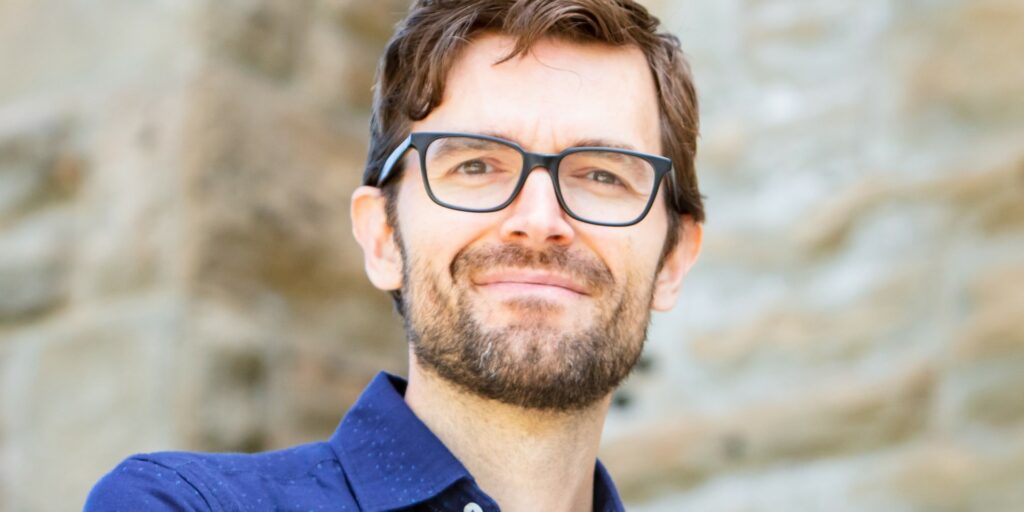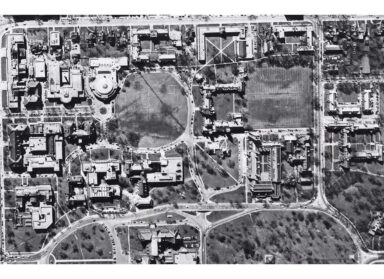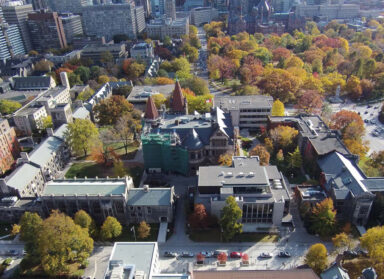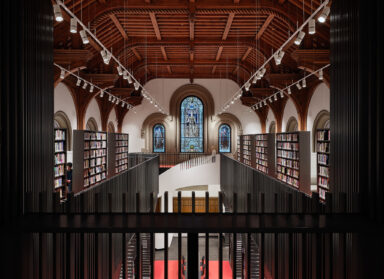Continuing our efforts to engage with landscape in foundational and innovative ways, ERA welcomes long-time collaborator Brendan Stewart back to the firm as a Senior Advisor on landscape practice. Brendan brings years of experience in landscape discourse and architecture from across the sectors of academia, industry, and nonprofit grassroots initiatives.
Having studied with Randy Hester at the University of California, Berkeley, Brendan’s wide-ranging engagement with landscape includes teaching and research as Assistant Professor of Landscape Architecture at the University of Guelph, suburban parking lot activations as founder of ERA-partner plazaPOPs, and numerous design projects.
To learn more about his background, career, and ideas, ERA writer-researcher Alessandro Tersigni sat down with Brendan to chat about landscape in the twenty-first century.
Alessandro Tersigni: How were you first introduced to landscape and how did that lead you to where you are now?
Brendan Stewart: I actually didn’t fall in love with the landscape field until I was already in it. I had an intellectual curiosity about landscape and actively pursued it, but a lot of my current interests were developed in grad school. I studied at UC Berkeley, which was a kind of outdoor laboratory, like all places that have an incredibly rich history in the landscape discipline. I went there specifically because I was interested in community-based work and the social, cultural, and participatory factors of design. But I also developed this deep interest in design history and understanding more about particular practitioners and their approaches. A lot of that led me to ERA, as you can imagine. There was a real sense of shared interest.
AT: Landscape architecture seems to be increasingly broadening and sophisticating. People tend to have at least a colloquial understanding of it in the twenty-first century. How do you see that transformation?
BS: I think landscape is having a moment because in many ways it’s the medium most prepared to tackle the issues we’re dealing with. Embedded in it are big questions about ecology, justice, equity, density, sustainability, and what it means to create a public realm that serves our habitation patterns. That might sound like I’m not interested in the other disciplines, but it’s the opposite—I’m fascinated by all of them, and the future practice is going to be transdisciplinary. But those challenges exist at a systems-oriented scale that’s encompassed most comprehensively by landscape. That’s what defines landscape: it’s dynamic and four-dimensional. If you’re serious about tackling these big problems, you inevitably arrive at, “Oh, it’s actually a landscape problem and it requires a landscape solution.”
AT: That universality is interesting because, while I imagine your landscape designs are as diverse as the projects themselves, there must be certain qualities or experiences that landscapes are particularly well-suited to facilitate.
BS: For one, I’d argue that landscape is active—but, then again, buildings are too. Many designers think about landscape aesthetics not just as a nice-to-have thing but as a kind of beauty that’s performative. The whole idea of aesthetics shouldn’t be limited to visual preferences. It’s about how our experiences of an environment affect us, and those effects are critically important to our individual and collective well-being, our social values, and all kinds of other things. So the form landscape takes, the way it’s programmed, and the way it functions all have massive consequences for people and communities.
Those ideas relate centrally to reconciliation. It’s not just about having nice places to go but having the opportunity to access ways of thinking. A lot of reconciliation work needs to happen outside of direct engagement with Indigenous people and communities, which is not a new idea. But I’m very inspired when I’m exposed to Indigenous practices and ways of knowing. My brain is constantly firing and trying to understand how that can inform landscape and decolonize the way we think and talk about it.
AT: You’ve worked with ERA in various capacities over the years, now as a Senior Advisor. What aspects of our practice are you most excited about working with the firm to develop?
BS: I’m just looking forward to being in the room—there are so many smart and interesting people in the firm. I love swimming in that water. I’m excited to get involved in projects that are testing ideas. Not all projects are going to solve or address every issue, but it’s fun to actively push on them. Where possible, building stronger bridges between the job I’m doing at the University of Guelph and the work that ERA does and creating a network between them would be great. There are so many funding tools to do that.
AT: That’s exciting! The way you talk about landscape design makes it sound like art. Do you think categorizing landscapes is helpful?
BS: There’s an interesting debate going on in the cultural landscape sphere, particularly in Europe, about whether we even need the word “cultural,” because isn’t all landscape cultural? In our context, I think terms like cultural landscape are useful for foregrounding invisible or intangible aspects of projects. Say you go to a concert and share this collective experience with a bunch of strangers. Afterwards, you’re like, “Whoa—where were we? That was a totally different, deeply human headspace: I felt so connected to everybody there.” I’m inspired by the idea that we as design practitioners can create in landscapes that type of liminal space that breaks down barriers and makes our human connections feel palpable. We don’t have great tools to describe that right now. I suppose it’s about getting better at measuring qualitative value in ways that clients, policymakers, and the public can understand.
AT: Thanks, Brendan. We’re looking forward to working with you.
You can reach Brendan at [email protected]




